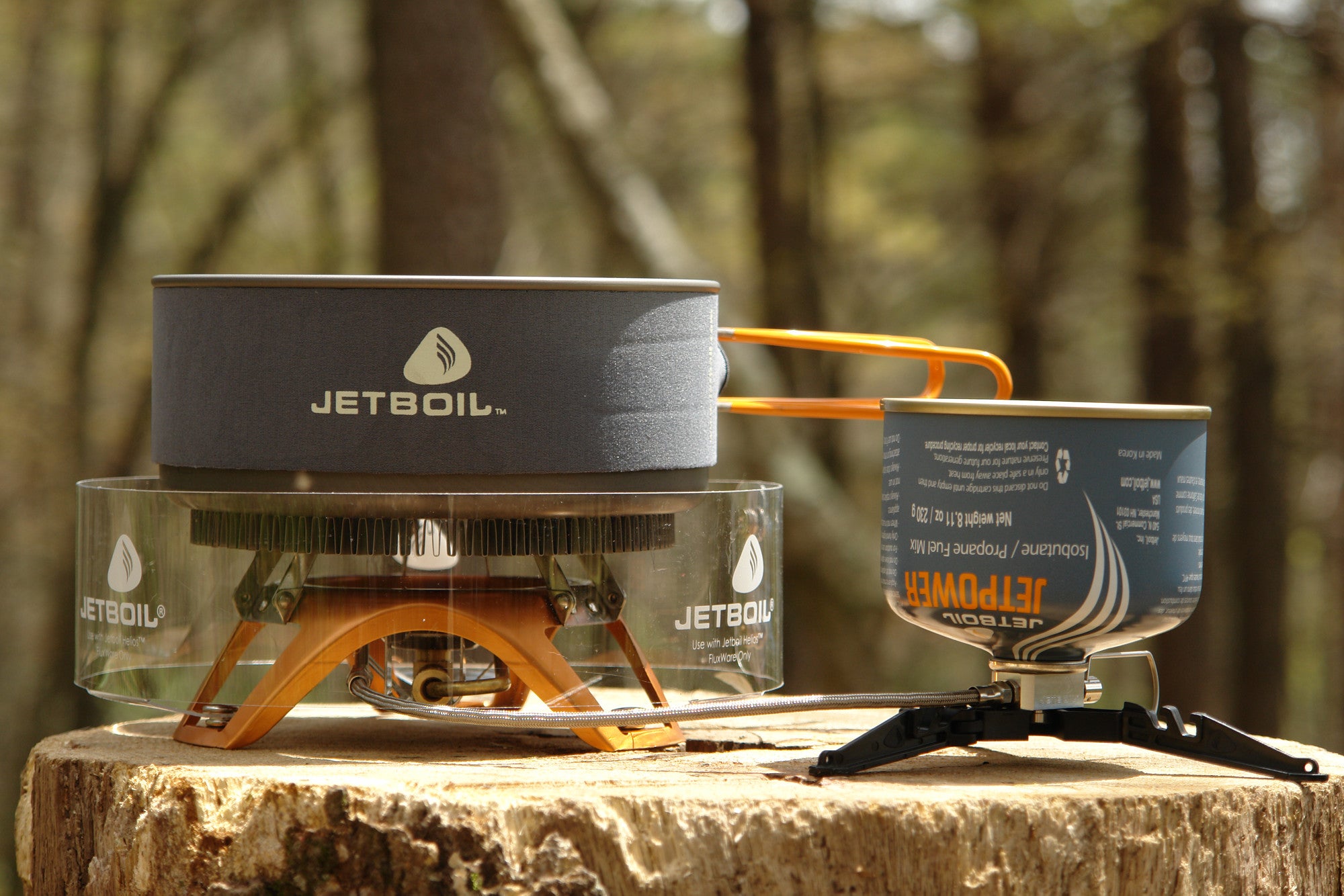How to Buy Your First Backpacking Stove

'patchattack'
The time has come. You’re tired of using your mom’s rusty stove from the 1980s, and you’re ready to buy one of your own. And knowing the ins and outs of your equipment before hitting the trail is going to make dinner a lot easier that first night. To make it easier to sort through the dozens of models out there, we’ve sorted through the pros and cons to help you make a decision that suits you and your cooking style.
Integrated Canister Stove
This setup combines stove, fuel, and pot into a single system. Example: Jetboil Flash ($100)
Pros
· Lightweight (14-15oz. including pot)
· Rapid boil (4.5 mins)
· Hard to knock your pot off the flame
· Easy to use
Cons
· Used canisters need to be packed out.
· Canisters are hard to recycle.
· Fuel pressure decreases at high altitude.
· Little to no control over the heat output
· Pots must be compatible with the stove .
· Hard to repair
Traditional Canister Stove
In this setup, the burner screws onto the fuel canister, and a pot is placed on top. Example: Snow Peak LiteMax ($60)
Pros
· Lightweight (2-3 oz.)
· Compact
· You have some control over the heat output.
· You can mix and match pots.
· Easy to use
Cons
· You must pack out used canisters.
· Canisters are hard to recycle.
· Fuel pressure decreases at high altitude.
· Can be too unstable for large pots
· Hard to repair
· Use of a windscreen can create an explosion hazard.
Propane Stove
This is the traditional two-burner car camping stove. Example: Coleman Triton ($80)
Pros
· Double burner for large groups
· Stable surface makes for easy cooking.
· Built-in wind protection
· Reliable in cold weather
Cons
· The stove is much too bulky for backpacking (around 10 lbs.)
· Propane canisters are heavy
· Canisters are hard to recycle
Solid Fuel Stove
Solid fuel stoves burn chemical fuel tablets. Example: Esbit Pocket Stove ($13)
Pros
· Extremely lightweight (0.1-3.5 oz.)
· Compact
· No need to pack out canisters
· Inexpensive
Cons
· Long cook time
· Easily extinguished by wind
· Fumes from fuel tabs aren’t good for you.
Alcohol Stove
This pocket-size stove is placed in a stand beneath the pot. Example: Solo Stove Alcohol Burner ($20)
Pros
· You can make it yourself with a used cat food can.
· Extremely cheap and lightweight (1-4oz.)
Cons
· Long cook time
· Not fuel efficient
· No temperature control
· Not recommended for cold weather
· May not be allowed under fire bans
Liquid Fuel Stove
A line from a gas bottle fuels this stove. Example: MSR WhisperLite ($90)
Pros
· Cheap fuel
· Refillable fuel bottles are eco-friendly and make international travel easy.
· Reliable in cold weather and at high altitude
· It’s safe to use a windscreen.
· Relatively easy to repair
Cons
· More complicated to learn how to use (priming required).
· Maintenance required
· Relatively heavy (11-14 oz.)
Remote Canister Stove
This stove uses a similar setup to liquid fuel stoves, but with a gas canister. That means some of the high-altitude benefits of liquid fuel, but without the priming. Example: MSR WindPro ($100)
Pros
· You can invert the canister for winter and high-altitude use.
· Quick boil
· Easy to use
Cons
· Heavier than traditional canister stoves (6 oz.)
· Used canisters need to be packed out.
· Canisters are hard to recycle.
· Fuel pressure still decreases at high altitude.
Wood Stove
A metal housing contains the wood-fueled fire, and the pot rests on top. Example: Solo Stove Camp Stove ($110)
Pros
· Fuel is plentiful (in areas with trees).
· More environmentally friendly than petroleum-based fuels
Cons
· Fuel source dependent on weather and location
· It’s time-consuming to build and maintain a fire.
· May not be allowed under fire bans